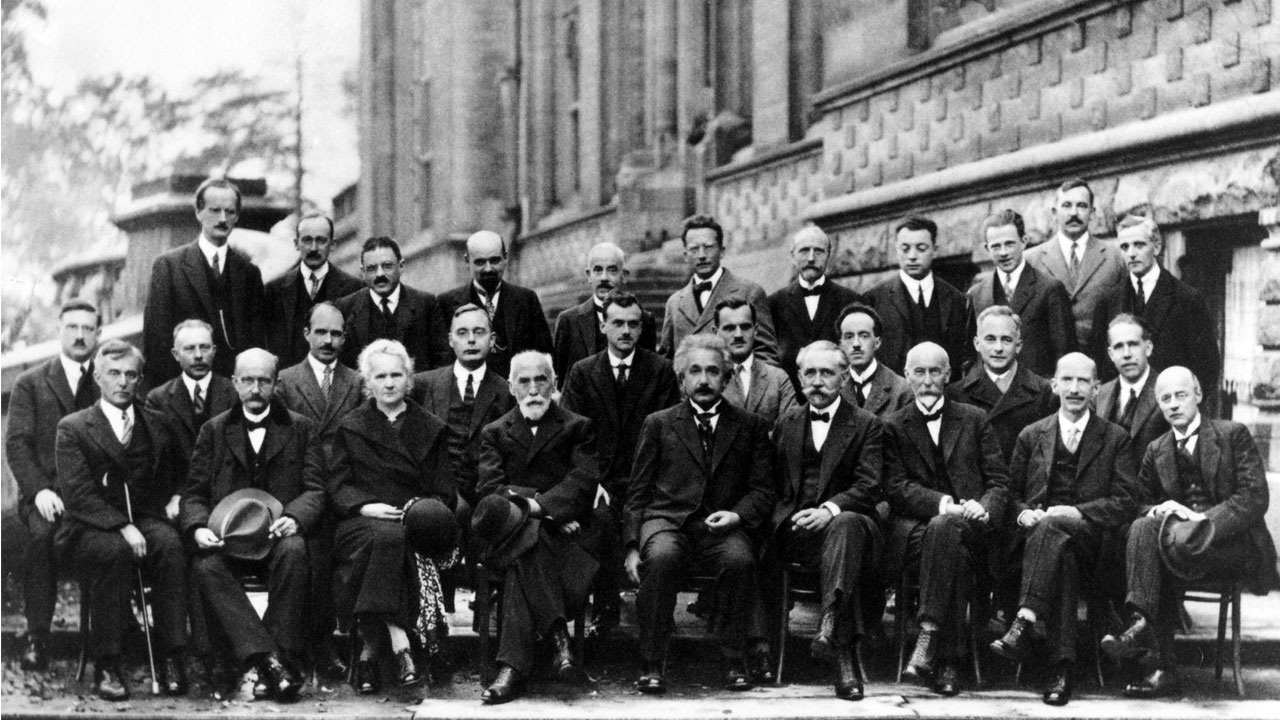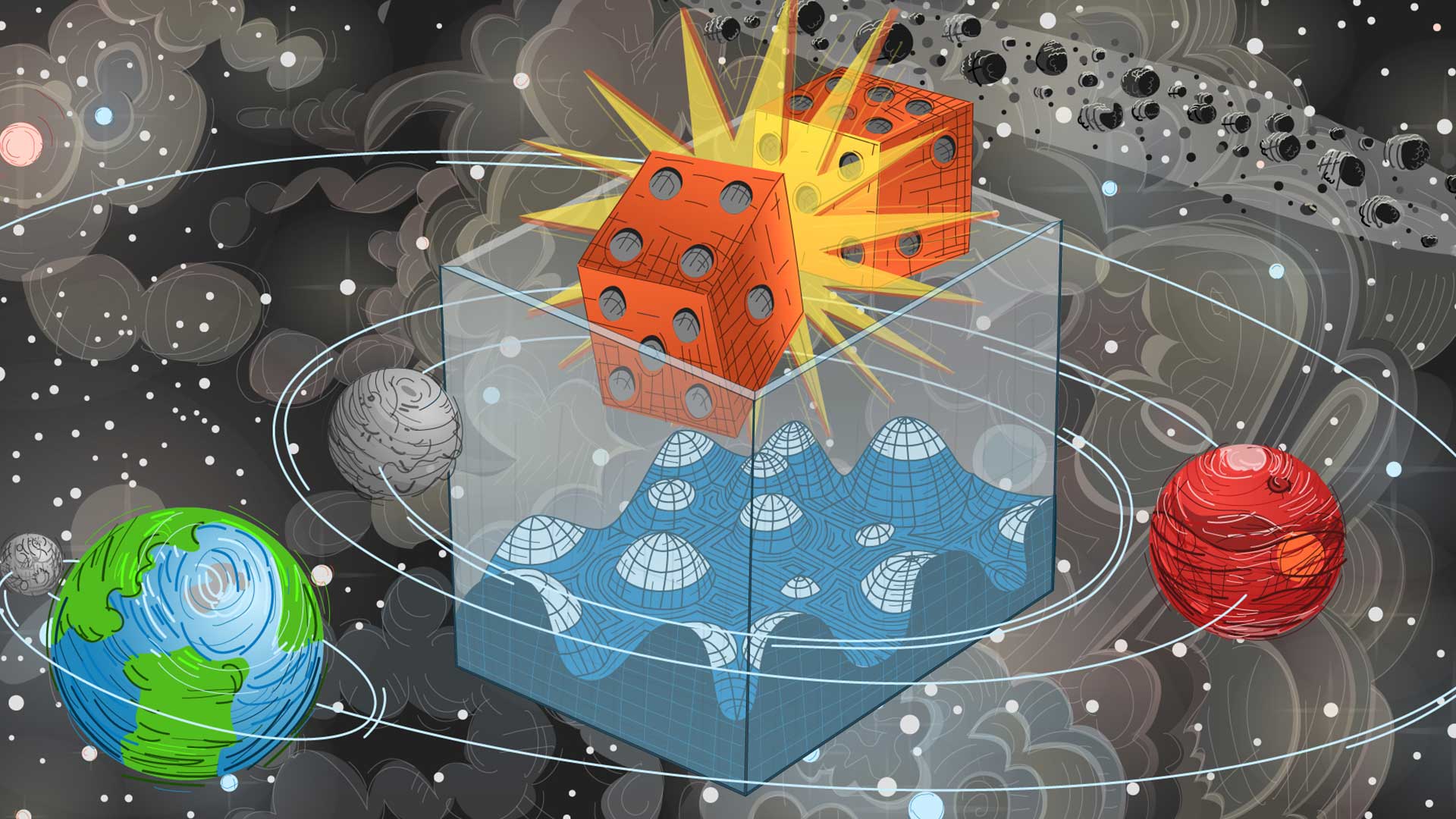
Welcome!
You have landed on the quantum mechanics tribute page! This is an exploration of the properties of nature at the itty bitty scale. You know, like atoms and subatomic particles. Things I know nothing about. But that's why it's a tribute page.
Let's start in 1927 at the famous Solvay Conference in Brussels, where the greats got together to talk about the newly formulated quantum theory. Everyone was there! Guests included Albert Einstein, Niels Bohr, Werner Heisenberg, Paul Dirac, and Erwin Schrödinger.
Solvay Conference 1927

Front row: Irving Langmuir, Max Planck, Marie Curie, Hendrik Lorentz, Albert Einstein, Paul Langevin, Charles-Eugène Guye, C.T.R Wilson, Owen Richardson.
Middle row: Peter Debye, Martin Knudsen, William Lawrence Bragg, Hendrik Anthony Kramers, Paul Dirac, Arthur Compton, Louis de Broglie, Max Born, Niels Bohr.
Back row: Auguste Piccard, Émile Henriot, Paul Ehrenfest, Édouard Herzen, Théophile de Donder, Erwin Schrödinger, JE Verschaffelt, Wolfgang Pauli, Werner Heisenberg, Ralph Fowler, Léon Brillouin.
Yes, quantum mechanics existed before the Solvay Conference. It's predecessor classical physics (Newton) gradually faded to Max Planck's ideas in 1900 about the black-body radiation problem. Max Planck and Albert Einstein would collaborate on topics such as energy and frequency which would eventually lead to Albert releasing his own theory on the photoelectric effect. The early attempts to understand microscopic phenomena is now referred to as the "old quantum theory." Later in the 1920s Niels Bohr, Erwin Schrödinger, Werner Heisenberg, Max Born and others would significantly add to the theory. Todays understanding is rooted in very specific mathematical formalisms. One of them is the wave function and it provides information about the probability amplitude of energy, momentum, and other physical properties of a particle.
Inspired by these courageous scientists, I try to dissect quantum mechanics by taking a close look at the physicist Sean Carroll's paper Why Probability in Quantum Mechanics is Given by the Wave Function Squared. But first lets explore a famous Einstein perspective, what he called the “cosmic religion.” This, he explained, is God’s presence evident in the order and rationality of nature. In essence, Einstein says, “God does not play dice.” What do you think about that?

Amplitudes give a probability density function for the position that the electron will be found to have when an experiment is performed to measure it. The Schrödinger equation relates the collection of probability amplitudes that pertain to one moment of time to the collection of probability amplitudes that pertain to another.

Check out this guitar bending the waves of sound over a desert night inspired by the Solvay Conference.
"The construction of meaning is a fundamentally individual, subjective, creative enterprise, and an intimidating responsibility." – Sean Carroll
Thanks for visiting the site! For more information hit the menu button.